Inside: Tips, tasks and toys for two-year-olds to promote their development and nurture their independence.
Your toddler is growing up and no longer a baby. You realize this with bittersweet emotions. On one hand, you will miss your baby, but on the other hand you are looking forward to more freedom for yourself.
The older your child becomes the less dependent he is on you and the more freedom you have. But, oh, how you will miss cuddling with your baby.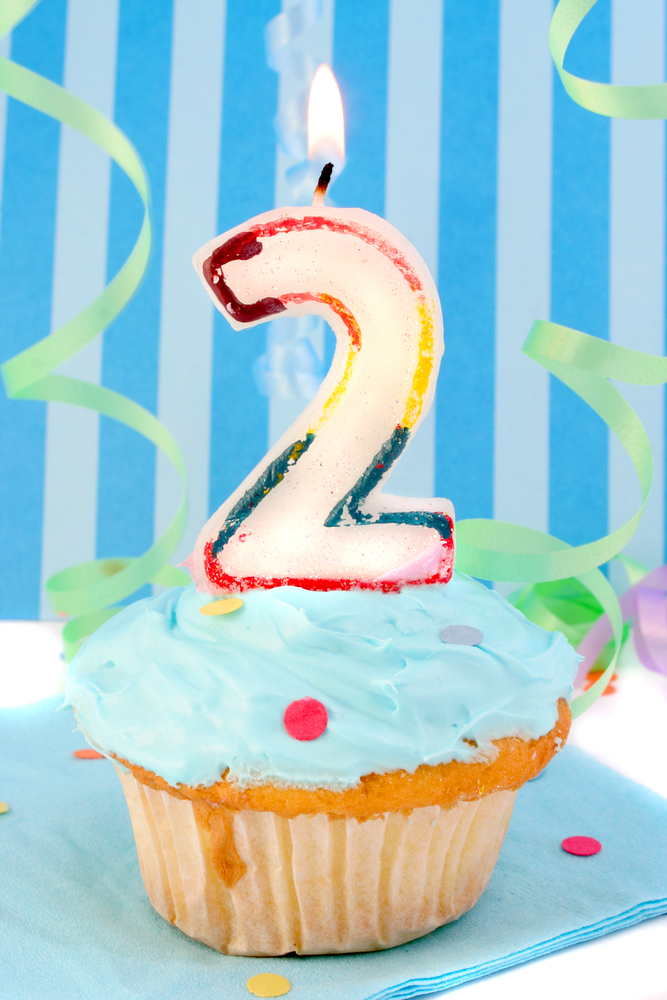
I understand this because my youngest is two and a half years old. She is becoming more of a little girl each day. I love seeing the transformation, but I already miss my baby so much!
I am making sure she is hitting the recommended milestones she needs to as a two-year-old by providing her with toys and activities that promote her development and growth.
This article will discuss the cognitive, language, physical and social/emotional development milestones found on the CDC website. I will also share developmentally appropriate tips, tasks and toys for two-year-olds that help nurture their independence.
Note: This post contains affiliate links. If you click on an affiliate link and subsequently make a purchase from the linked website, I may receive a commission. Please read my affiliate disclosure for more information.
Cognitive Development
- Find things even when hidden under two or three covers
- Begin to sort shapes and colors
- Completes sentences and rhymes in familiar books
- Plays simple make believe games
- Builds towers of four or more blocks
- Might use one hand more than the other
- Follows two-step directions such as “Pick up your shoes and out them in the closet.”
- Names items in a book such as a cat, bird or dog
Tips, tasks and toys for two-year-olds to reinforce Cognitive Development:
1. Hide items under blankets, sheets, napkins, paper, etc… and see if your child can find them.
2. Use blocks that are different shapes and colors such as wooden shape blocks to practice sorting.
You can also provide blocks for your child to use to practice building towers and other structures. 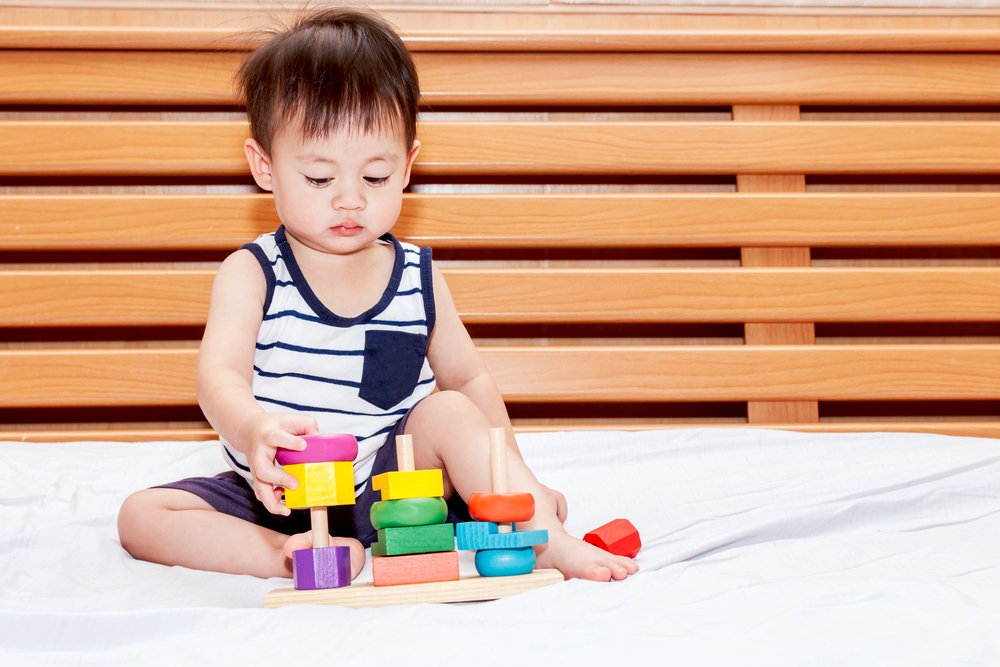
Check out this post for a simple and affordable way to make your own blocks.
3. Provide your child with dolls, toy vehicles or other pretend items that can be used to role-play. These toys for two-year-olds will encourage them to learn by imitating what they see the adults in their world doing.
My daughter loves pretending that she is talking on my phone. She also likes to “feed” her baby doll a bottle. Any chance for your child to play make believe is great for brain development.
4. Give your child many opportunities to practice following two-step directions such as: “Pick up the ball and put it in the toy box.” “Get the cup of water. Pour it on the flowers.” “Pick out a book. Bring it to me and I’ll read it to you.”
5. Read to your child at least 15 minutes each day. Familiar books with predictable, rhyming text are great for children this age.
Here are a few books that I recommend as a parent and as an early childhood educator.
Language/Communication Development
- Points to things in a book
- Points to things or pictures when they are named
- Knows names of familiar people and body parts
- Says sentences with 2-4 words
- Follows simple instructions
- Repeats words overheard in conversation
Tips, tasks and toys for two-year-olds to reinforce Language/Communication: 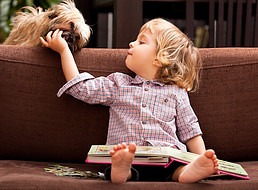
1. When reading a book to your child, say “Where is the cow?” and see if your child can point to it. Point to a picture and ask your child “What is this?” Point to pictures of animals in books and have your child make the appropriate sound for the animal.
2. Ask your child to point to certain body parts on his body. “Where is your nose?” Can you show me where your knee is?”
3. Make a photo album of people in your immediate and extended family. Go through the album naming the people and/or having your child name her relatives after seeing the familiar faces.
You can also make an album with pictures of your child’s friends or other close acquaintances.
4. Model appropriate language and sentence structure by speaking to your child about what you or someone else is doing.
“Mommy is washing the dishes so they will be clean.” “Daddy is driving us in the car to the store.” “You are drinking your cup of milk.”
Children this age will model your speech in a modified way. “Mommy wash dishes.” “Daddy drive car.” “Drink milk.” This is how your child begins to communicate with more than just one word.
Movement/Physical Development
- Climbs onto and down from furniture without help
- Walks up and down stairs without holding on
- Begins to run
- Stands on tiptoe
- Kicks a ball
- Throws a ball overhand
- Makes and copies straight lines and circles
Tips, tasks and toys for two-year-olds to reinforce Movement/Physical Development:
1. Model how to make straight lines and circles and then have your child trace and copy your drawings with a crayon.
2. Make sure your child has a slide or play set to practice climbing up and down on. Climbing is a great way for your child to strengthen and develop his muscles. Climbing up the ladder to the slide helps your child learn to walk up and down stairs.
3. Provide your child with lots of opportunities to throw, catch and kick a ball. I recommend balls like these Peppa Playground Balls to help your child practice movement with a ball. 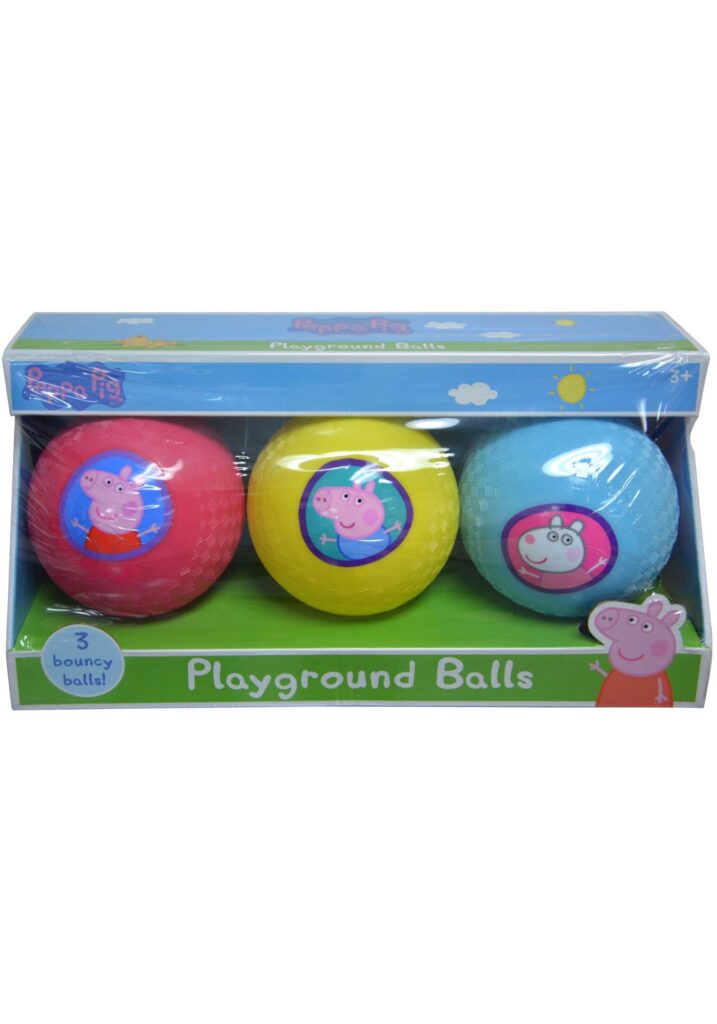
Social/Emotional Development
- Copies others, especially adults and other children
- Gets excited when with other children
- Plays mainly beside other children, but is beginning to include other children in games such as chase
- Shows more and more independence
- Shows defiant behavior
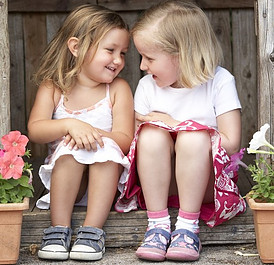 Tips, tasks and toys for two-year-olds to reinforce Social/Emotional Development:
Tips, tasks and toys for two-year-olds to reinforce Social/Emotional Development:
1. Let your child play with toys such as toy vehicles, dolls, kitchen sets and tool sets to allow your child the opportunity to imitate and role-play what she sees other adults and children doing in real life.
2. Provide the opportunity for your child to meet and play with other children her age.
If your child doesn’t attend daycare or know many kids her age, check with your local library to see if there is a scheduled story time each week.
This is a great way for your child to meet other children and for you to meet other parents.
3. Take your child to the park to play. There may be other children for your child to meet and play with there.
Choices, Choices
You’ve probably heard the phrase “the terrible twos.” (Personally, I think it applies more to three years olds). That’s because two year old children are testing their independence.
I have witnessed my daughter test her independence more frequently recently. She wants to be free to choose and do what she wants. This results in testing my patience because I know that not all decisions she makes are safe or wise.
From experience with my son (and from the advice of experts) I have learned to allow children this age to make as many choices possible. It takes more time, but results in less power struggles and meltdowns from my child.
I allow my child to make many choices during the day. 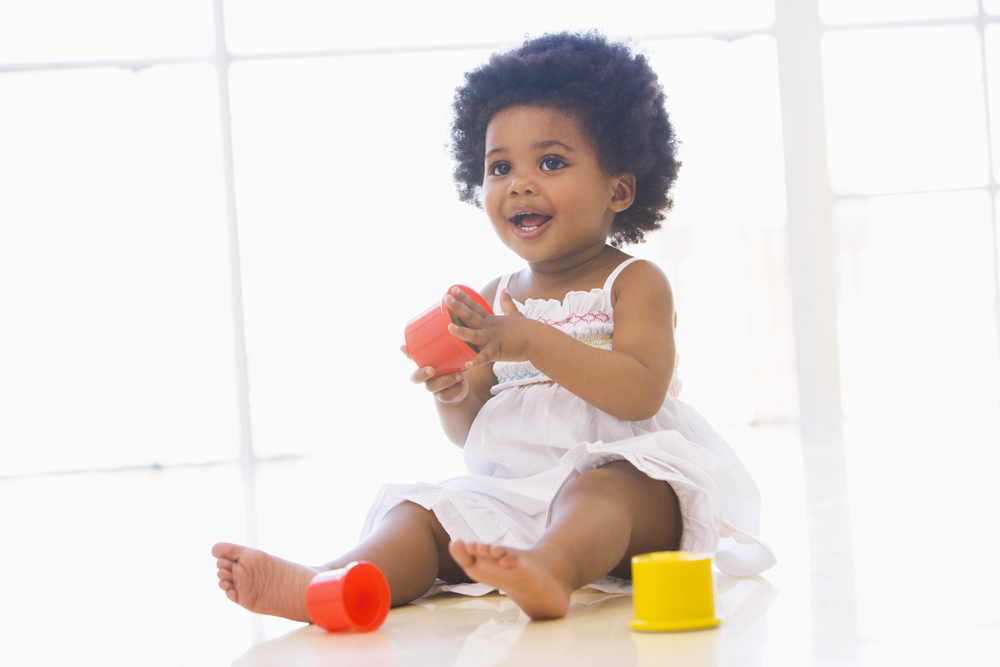
“Would you like to draw with the red crayon or the blue crayon?” “Do you want the yellow or blue cup?” “Do you want to eat your peas or your potatoes first?”
The choices I provide are really quite small, but they give my little girl the control she so desperately desires.
At the same time, I get her to do what I want her to do without defiant behavior.
I only provide my toddler with two options and I make sure the options I offer are choices that I am fine with her choosing.
Providing lots of opportunity for my daughter to make choices allows me to say “It is my turn to choose” when I need to make an important choice my child is not yet capable of making.
How about you? Do you have a child this age? Is your child demonstrating the need to be independent? If so, make sure you have the appropriate toys for two-year-olds and are providing lots of opportunity for your child to make choices.
Best of luck as you nurture your child towards independence!
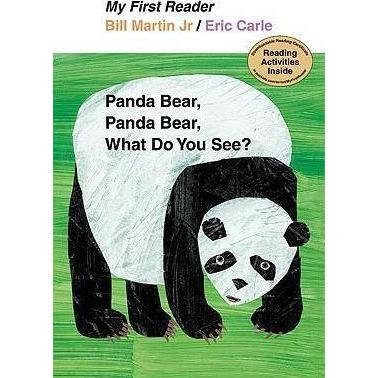

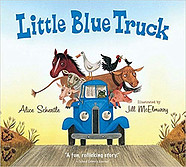









Thank you Sharon, this blog is very interesting with a lot of great advice.
My two grand babies are 21 months and 3.5 years. And I can’t believe how different they are in their progression. I guess I forgot a lot of that with my own two kids lol.
I laughed out loud when you explained the climbing and the defiant behaviour. Oh yeah, that’s going on full force right now.
Yet I agree with you about the threes being more difficult. And that I remember from my kids too!
This is all great advice to new parents out there. I’ll be forwarding your article to my daughter.
Cheers
Suzanne
Awesome job on your site looks very professional
Thank you!